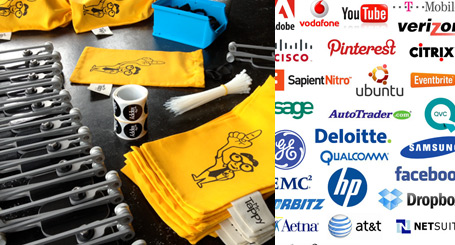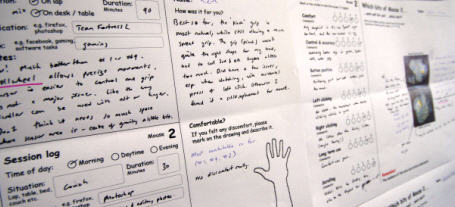The second half of the year was no less exciting with client work, but was boosted by the buzz of my own product hitting it’s stride in the market.
From July to December: Home brewing, TV, Mr. Tappy and Motorhomes.
Here goes…
5. Craft brewing insights
Location: Portland, Oregon. Micro brewery capital of the world.
Client: imake / (Part of the Better by Design programme).

Portland is the world’s capital of micro breweries and craft brewers. Visiting with imake’s team from NZ, Australia and USA, we stepped inside the garages, basements and minds of craft brewers, aiming to understand what makes them tick, and how they approach brewing.
My role as part of Better By Design is to help build design capacity within NZ export companies like imake. In many cases this starts with understanding customer needs, so getting out in the field like this was a perfect first step towards customer empathy.
In Oregon, I briefed the team on how to get the most from contextual interviews, supported them in the field, then coached them through collaborative analysis.

A deep dive into brewing culture, but my satisfaction came in that it was the client team who drew out the insights and identified opportunities for marketing and product development.
–
6. How do you view?
Client: SKY TV.
Location: Around NZ.
A classic contextual study in homes around NZ to understand how TV fits into people’s lives and how? / when? / where? / why? they get their fix.

Having run studies like this for BBC and SKY in the U.K. back in the late noughties it was super interesting to see shifts in consumer expectation and behaviour. Back then it was ‘time-shifting’, now it’s ‘omni-screening’. From devices to content sources, this felt like a ‘snapshot in time’ in the dynamic landscape of TV.
Insights from this project fed into new product development and an upcoming redesign of SKYTV.co.nz.
–
7. Tapping into the mobile market
Client: My alter ego – Mr. Tappy.
Location: My kitchen table, and 30 countries.
Yes, from kitchen table to global tech giants in 2 years and just 700 easy steps.

My side-project, Mr. Tappy, (a product I’ve developed to help film people interacting with mobile devices) continued to surprise me with sales to the point where I can nearly hear myself blush when I see my list of customers.
Taking this product to market has been a humbling learning curve for me. Even when working alone I find myself being design, marketing, sales, distribution, customer service, etc., discovering how easy it is to work in silos and lose customer focus – Something nobody can afford to do, especially when your customers are expert product evaluators.

Having ‘skin in the game’ has resulted in greater respect for my design research clients‘. Running day to day operations, and shipping product is challenge enough let alone keeping an eye on customers. This first hand experience helps me understand my role as a design researcher with each client.
The entire product is made right here in NZ (some in my home workshop) and the next iteration will ship with a purpose designed HD camera.
–
8. Living the dream, via your own motorhome
Client: Tourism Holdings.
Location: Australia and NZ.
We’ve all been stuck behind one on a hill on the way to the beach, but what’s it like to buy a home, and a vehicle at the same time? We set out to find out.

I worked alongside Ed Burak, THL’s lead experience designer to provide research muscle on a project around motorhome sales. Motorhome buyers are a fairly relaxed bunch, usually at retirement age and with some time on their hands, but buying one of these rolling holiday homes is not always a holiday.

From a few dozen interviews with owners, buyers, salespeople and experts, we poured our insights into a customer journey map highlighting parts of the buyers’ journey where the experience could be improved.
… and as you’ll see, some of my illustrations for the journey map were verging on the autobiographical. Yes, the waves were always like that in my memories.
–
…What’s next?
All the talk of holidays and time away was perfect timing for the end of 2013 and inspired me to use the caravan (which was once my office) a few times over the Christmas period. Good timing.
If you missed my previous post, here are the first four dream design research briefs from last year.




 These two snippets make me wonder if a customer focused approach to business and design has truly taken hold here. One’s about Banks, the other Camper-vans.
These two snippets make me wonder if a customer focused approach to business and design has truly taken hold here. One’s about Banks, the other Camper-vans.


